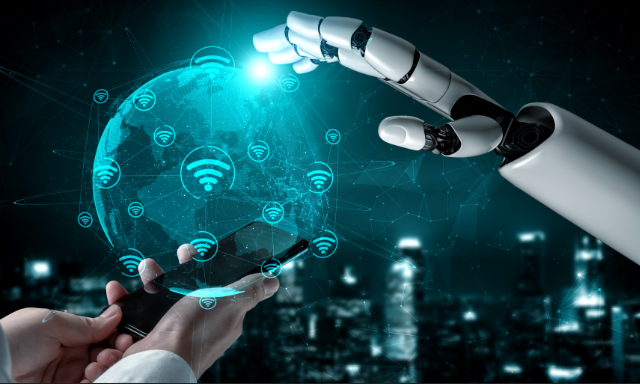

With global spending on AI systems set to double between 2023 and 2026, it’s clear that data center capacity will increase rapidly to meet demand.
However, surprisingly many data center operators have hit the brakes on new projects and slowed investment over the past year, with vacant capacity in London falling by 6.3% in 2022-23.
What’s behind this counter-intuitive trend? To explain this, we need to understand some of the issues related to artificial intelligence computing and the infrastructure that supports it
Data centers have always been built around The CPU power supply is expanded to handle traditional computing workloads. However, AI computing requires a GPU-driven rack, which consumes more power, dissipates more heat, and takes up more space than a CPU of the same capacity. In practice, this means AI computing power often requires more power connections or alternative cooling systems. Can be rephrased as: What this essentially means is that AI computing power typically requires more power connections or alternative cooling systems. Since this is embedded infrastructure, it is built into the data center complex. structures, replacement costs are often extremely high, if not completely economically impossible.
In practice, operators must commit to how much space in new data centers is dedicated to AI versus traditional computing
If you make this mistake and overcommit to AI, Potentially leaving data center operators with permanently underutilized and unprofitable capacity
This problem is exacerbated by the fact that the AI market is still in its infancy, with Gartner claiming it is currently in a hype cycle where expectations are too high of the peak. As a result, many operators are choosing to hesitate in the design phase rather than commit prematurely to the proportion of AI computing in new data center projects.
Take a holistic approach during the design phase
However, operators are acutely aware that if they do not take the risk of delaying investment, they will lose market share and competitive advantage. However, this is a tall order given that many of the fundamentals of data center infrastructure are being rewritten in real time.
1. Involve more stakeholders
No matter how operators decide to differentiate between artificial intelligence and traditional computing, data center sites with artificial intelligence computing capabilities will be much more complex than traditional facilities . Higher complexity often means more points of failure, especially since AI computing has more demands than traditional computing.
In particular, the design phase should seek input from the wider team and expertise at the beginning of the project. In addition to seeking expertise in power and cooling, designers should work early with operations, cabling, and security teams to understand potential sources of bottlenecks or failures
2. Integrating Artificial Intelligence into Data Center Operations
Since operators now have AI computing in the field, they should leverage their ability to leverage AI to improve operational efficiency. Artificial intelligence has a long history of adoption in data centers, with the technology able to execute workflows with extremely high precision and quality. For example, artificial intelligence can help with:
Temperature and humidity monitoringSafety system operationsAlthough the infrastructure requirements for AI computing may be the main reason why operators delay investment, in the long run, this will not be the case
As the market As uncertainty increases, companies will be split between traditional computing and artificial intelligence computing, moving closer to their "golden fields"
In this case, companies should ensure that they have everything in place in website operations Possible advantages in order to succeed as they learn and grow
This means designing holistically from the beginning, leveraging AI itself to discover new efficiencies in their sites, and investing in investments that can meet the needs of AI Calculate greater demand for quality materials.
The above is the detailed content of How artificial intelligence is changing data center design. For more information, please follow other related articles on the PHP Chinese website!
 Application of artificial intelligence in life
Application of artificial intelligence in life
 What is the basic concept of artificial intelligence
What is the basic concept of artificial intelligence
 Can windows.old be deleted?
Can windows.old be deleted?
 What does full-width and half-width mean?
What does full-width and half-width mean?
 What happens when software crashes?
What happens when software crashes?
 What does Douyin sw prompt sound mean?
What does Douyin sw prompt sound mean?
 What does c# mean?
What does c# mean?
 Why is there no sound in Tencent meetings?
Why is there no sound in Tencent meetings?




